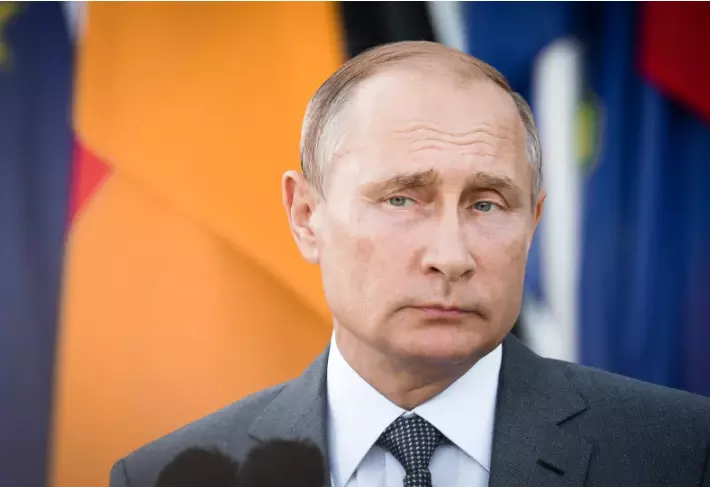
- Home
- India
- World
- Premium
- THE FEDERAL SPECIAL
- Analysis
- States
- Perspective
- Videos
- Sports
- Education
- Entertainment
- Elections
- Features
- Health
- Business
- Series
- In memoriam: Sheikh Mujibur Rahman
- Bishnoi's Men
- NEET TANGLE
- Economy Series
- Earth Day
- Kashmir’s Frozen Turbulence
- India@75
- The legend of Ramjanmabhoomi
- Liberalisation@30
- How to tame a dragon
- Celebrating biodiversity
- Farm Matters
- 50 days of solitude
- Bringing Migrants Home
- Budget 2020
- Jharkhand Votes
- The Federal Investigates
- The Federal Impact
- Vanishing Sand
- Gandhi @ 150
- Andhra Today
- Field report
- Operation Gulmarg
- Pandemic @1 Mn in India
- The Federal Year-End
- The Zero Year
- Science
- Brand studio
- Newsletter
- Elections 2024
- Events
- Home
- IndiaIndia
- World
- Analysis
- StatesStates
- PerspectivePerspective
- VideosVideos
- Sports
- Education
- Entertainment
- ElectionsElections
- Features
- Health
- BusinessBusiness
- Premium
- Loading...
Premium - Events

He had calculated that the US led-West would not dare enter the conflict; he was mistaken
Having started a war that has already run over 500 days, Russian President Vladimir Putin appears to be in a fix. Neither is his invasion culminating in anything tangible nor is he backing off. Meanwhile Ukraine, which has stoically faced the brunt of Russia’s attack, has in recent times started to retaliate, although in a limited way.
Ukraine is no Georgia
Putin, whose main intention was to teach Ukraine a “lesson” and prevent it from joining the Western military alliance Nato, must have hoped for a quick finish like in the case of Russia’s attack on Georgia in 2008. That war ended in less than a week leaving Georgia bruised and Russia asserting its supremacy and also capturing the bordering region of South Ossetia in the bargain.
But the denouement over the last several months in the current conflagration makes it clear that Ukraine is no Georgia.
So, how do the odds stack up for Putin and Ukraine’s Volodymyr Zelenskyy? Yes, Ukraine has suffered immensely with extensive damage in parts of the country estimated at around $135 billion. Almost 10,000 civilians have been killed besides thousands more injured, and at least 11 million displaced.
Putin calculated that the West, like in the case of Georgia, would not dare enter the conflict and does not seem to have made allowances for such a possibility. In the early days of the invasion, Zelenskyy appealed for Western help. As Putin expected, the Nato nations refused to send troops to Ukraine as that had the potential to expand the theatre of conflict and possible World War.
Instead, and this is where Putin went wrong, the US and its allies in Europe started to provide logistical support to Ukraine. They have sent in military consultants, despatched vast amounts of arms and politically pushed Putin on the defensive by enforcing global sanctions against him, his government and Russia as a whole.
Aid pour in for Ukraine
According to latest figures, at least 10 European nations and the US have totally pumped in an approximately $110 billion worth weaponry into Ukraine. The US contribution alone is around $50 billion. The mind-boggling array of weapons include the cutting-edge Patriot missile system, the S-300 air defence system and a variety of tanks like Abrams, Leopard 2 and the Challenger 2. Add to these the Stryker armoured fighting vehicle, the Bradley fighting vehicle and the latest drones including Turkey’s Bayrakter TB2 besides anti-tank weaponry, missiles etc. The only thing of note missing is actual Nato boot presence in Ukraine.
Putin could have retaliated against the West directly, but that may have been too risky as it is not the same as taking on less-powerful former Soviet provinces. The only pyrrhic counter from Russia has been to revoke the Black Sea free grain agreement that assured Ukraine trouble-free pathway to export much-need foodgrains to Africa, among others. Putin not only hopes to block Ukraine but also increase Russia’s own exports instead. However, the West which had authorised the United Nations to enable Putin to export grains has now threatened retaliation unless Putin returns to the agreement.
China, which has morally and diplomatically sided with Russia, has hesitated to get more involved as it has its own equations with the West. Though not on the best of terms with the US and its allies, the Xi Jinping government does not see any significant benefits in further antagonising the West, unless attacks on Russia increase substantially. In which case, China may come to Putin’s rescue as it impinges on its own security as well, even if only existential.
Ukrainian retaliation, Putin’s dilemma
Wars are costly and can impose unimaginable strains on any country’s economy and resources. It is this premise the US and its allies are trying to exploit. From a high-intensity war in the first few weeks, it has turned into a simmering conflict with sporadic and targeted attacks from Russia. If Putin is conserving Russia’s resources the West is ensuring that the conflict continues even if at low intensity. Ukraine has been able to target buildings inside Moscow, attack Russia’s warships and fire missiles. This includes the recent attack on Russian tankers using drones.
The latest has been a Ukrainian ground offensive to retake Russian-occupied areas in the Donbas region. Obviously, it is not easy and the progress has been patchy. But, again, with Western support the Ukrainian troops are continuing to pushback.
Logically, it is Russia that should be eager to strike an agreement and end the conflict as it is being economically squeezed and militarily stretched. But that would mean having to give up on Putin’s original aim of ensuring Ukraine does not join Nato. It would also mean having to withdraw from areas in Ukraine that it has captured not only in the current war, but possibly also those annexed in the earlier one in 2014 including Crimea.
Russia’s absence at the recent peace talks hosted by Saudi Arabia reflects Putin’s dilemma. What is it that he can offer for peace? In the absence of an outright end to the conflict, he is stuck. Half-measures won’t serve Russia’s strategic purpose. At the beginning of the war, it was Ukraine that was keen to stop the fighting. The surprise element remained with Putin and he was turning the knife in Kyiv’s gut. Zelenskyy even indicated he would not insist on Ukraine joining Nato.
After two rounds of talks, and no word from Putin, the situation changed. The US-led Western alliance, recovering from the unexpected invasion, appeared to have reworked its strategy to fix Putin. The peace talks floundered and ground to a halt, until the latest one in Riyadh.
Russia’s waning strength
A closer examination of the war reveals important changes. Russia’s initial thrust has now reduced to the occasional missile or drone attack. It is spending time, effort and resources trying to hold on to the eastern Donbas areas. Ukraine, which was shell-shocked when the invasion began, has now clambered back into contention with the help of specialised weaponry, advice and political support from the West. The drone attacks on Russia and its success in defending and recovering parts of its territory have managed to turn the war on its head.
The West is following its time-tested strategy of prolonging the conflict to wear down Russia. It happened earlier during the Soviet invasion of Afghanistan. In that war too, the Soviets entered Kabul with a view to installing a pro-Moscow government. But it turned out differently, when the US intervened to support the Islamic Mujahedin who engaged the Soviets in a decade-long resistance.
At the end of it, the Soviet economy went into a tailspin, popular support within the Soviet Union dropped sharply due to the deaths of their soldiers and a restlessness spread right across the erstwhile superpower. In fact, the disintegration of the Soviet Union is directly attributable to its Afghan invasion.
Another country that paid a steep price for similarly attacking its neighbour was Iraq which tried to force a border dispute against Iran in its favour in 1980. The Iraq government under Saddam Hussein miscalculated the strength of its neighbour Iran which had just then experienced a successful popular uprising. The Baghdad dispensation decided to forcibly take over the disputed Shatt-al-Arab river along their common border.
Interestingly, Iraq was backed by the US. But the fierce resistance from Iran stretched the war for eight years. During this time, the US and Saddam Hussein ties soured and the beneficiary willy-nilly was Iran. Though mutually hostile otherwise, the US ended up backing Iran against Iraq. Eight years later, the war ended in a stalemate with no gain or loss for both.
But Iraq’s economy was in a shambles, one reason why Saddam Hussein attacked Kuwait over a dispute about oil pricing. Using the opportunity, the US led an UN-backed international coalition and freed Kuwait from Iraq. And in 2003, when the Bush administration launched an invasion of Iraq, a much-weakened Saddam Hussein was in no position to offer any resistance.
These two instances clearly indicate what a long-term war can mean for Russia. If Putin is unable to think through and seize the initiative ASAP, he may end up paying a heavy price for his indiscretion in Ukraine. One key variable is China. If he manages to get the active support of Beijing, there may still be hope for him, but as it stands, that possibility seems distant.


